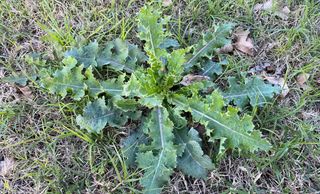Please call 210-313-5801 for a Free Evaluation today!
Common Grasses
Bermuda
St. Augustine
St. Augustine

Strengths:
- healthy bermudagrass competes well against most weeds
- withstand high traffic (very durable)
- drought and heat-resistant
- can recuperate quickly
- lower risk to diseases
Weaknesses:
- not ideal in shaded environment
- can grow into flower beds
- requires more frequent mowing
St. Augustine
St. Augustine
St. Augustine

Strengths:
- dense St. Augustinegrass competes well against weeds
- shade-tolerant
- grows well in most soil types
Weaknesses:
- very prone to diseases such as St. Augustine Decline, Leaf Spot Disease, and Brown Patch Disease
- dies during long periods of hot and cold weather
- requires more frequent watering during summer months
- has average to poor tolerance to foot traffic
Zoysia
St. Augustine
Zoysia

Strengths:
- zoysiagrass tolerates heat and drought very well
- highly resistant to insects and diseases
- prefers sun but can be shade-tolerant
- lower water and maintenance requirements
- dense and traffic-tolerant
Weaknesses:
- produces thatch (a layer of dead grass on the surface that does not decompose and can block air, water, and nutrients into the soil.)
- can recuperate slowly
Common Weeds
Thistle
Chickweed
Chickweed

Chickweed
Chickweed
Chickweed

Henbit
Chickweed
Dandelion

Dandelion
Wild Carrot
Dandelion

Clover
Wild Carrot
Wild Carrot

.
Wild Carrot
Wild Carrot
Wild Carrot

Common Pests
Fire Ants
Flea & Ticks
Grub Worms

Fire ants damage lawns by colonizing deep in the soil and can undermine the grass root system. Ants usually colonize near water sources such as irrigation leaks. Ant mounds and hills in lawns can be a threat to pets and children as well as being a tripping hazard and make mowing difficult. Raking out small ant mounds and hills can help prevent large, lawn-damaging colonies.
Grub Worms
Flea & Ticks
Grub Worms

Grub worms feed on grassroots which produces brown patchy turf. Proper watering and fertilization help prevent these pests. Early detection of grub worms is helpful for treatment because they grow bigger and dig deeper down into the root system, thus making them difficult to treat.
Flea & Ticks
Flea & Ticks
Flea & Ticks

Fleas and ticks feed on their host's blood, and they can spread diseases to humans and pets. Fleas prefer shaded areas in your lawn such as doghouses and underneath lawn structures. Ticks tend to be in tall grass and branches. Keep your lawn clean from piles of leaves and have your grass and shrubs trimmed frequently to help prevent these disease-carriers.
Chinchbugs
Chinchbugs
Flea & Ticks

Chinchbugs cause expanding areas of stunted or dead grass surrounded by a halo of yellowing or dying grass. They can be prevented with thatch control, proper watering, and planting resistant varieties.
Aphids
Chinchbugs
Aphids

Aphids can cause major damage in large populations by feeding on roots in turfgrass and by transmitting a virus that causes yellowing, curling, and stunted growth of leaves on plants. Aphids also produce a sugary waste called "honeydew" that attracts fire ants and other lawn pests.
Common Diseases
Leaf Spot Disease
Brown Patch Disease
Brown Patch Disease

Leaf spot disease is a fungi that can affect warm-season grasses. Individual blades of grass appear to have dark lesions with yellow halos. Leaf spot may become serious when it enters the melting-out phase which can kill your lawn. Proper treatments can help minimize spores from spreading. Watering in the morning instead of watering in the evening is crucial for prevention because it allows the lawn to dry quickly in the sunlight which stops spores from spreading.
Brown Patch Disease
Brown Patch Disease
Brown Patch Disease

Brown patch disease is a fungus that can grow quickly in warm, humid weather. Symptoms include circular brown patches of grass and causes the grass to be easily pulled from the ground. Similar to leaf spot disease, keeping your lawn dry by watering in the morning is crucial to help stop the spread of infected turf. The effectiveness of fungicides is greater when they are applied before brown patch becomes well established.
Dollar Spot
Brown Patch Disease
Dollar Spot

Dollar spot is a fungal disease that affects hybrid bermuda and zoysia grass. This disease forms small, circular brown spots, about the size of a silver dollar. Grass blades affected by dollar spot have light tan spots with reddish borders. Removing thatch and fertilizing properly can help control dollar spot.
Copyright © 2020 StayGreen USA - All Rights Reserved.
Have a Nice Lawn!